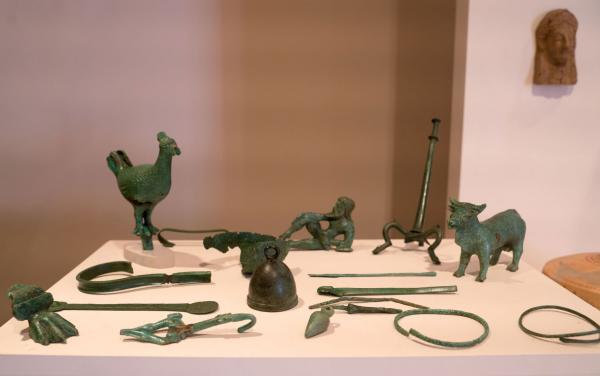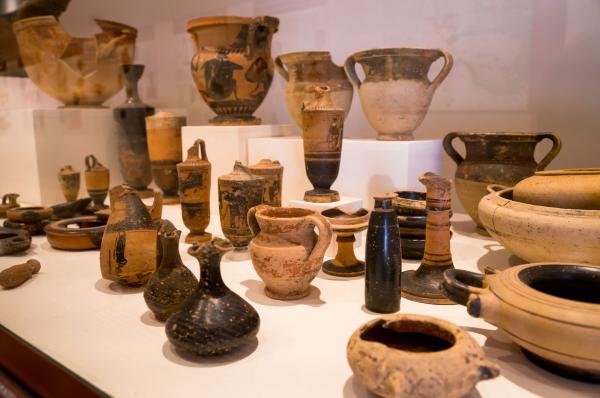An immense stretch of olive trees that covers the area of the archaeological park of the ancient Magno-Greek city of Medma, in the region of Rosarno. The museum, which contains most of the artefacts found in this area that serve as silent witnesses of a millennial past, comes from this context.

The Medma Rosarno Museum
The abundant harvest of archaeological materials found in the Rosarese subsoil traces back between the 6th and 4th century BC and allows for the reconstruction of the complex artistic and religious activities from the small city. Most of the artefacts exhibited in the museum come from excavations conducted at the beginning of the 20th century by Paolo Orsi.
From coroplasty to bronze processing
Among the exhibitions in the museum, the typical medea-style coroplasty artefacts stand out: statuettes, shapes, busts and large masks that are molded with red-orange and red-brown terracotta. In addition to the abundant clay material, the numerous furnaces found in the area also bear witness to a thriving industry linked to the manufacture of terracotta. There is also a rich collection of votive objects, mainly dedicated to the cult of Persephone, and, among the bronze artefacts, the phialai, which are shallow cups used for libations, are of specific importance.
DID YOU KNOW THAT …?
The faces of the medmee statuettes were characterized by their fleshy and arched lips, with light dimples at the corners of the mouth. This technique served to produce the effect of the enigmatic and mysterious smile, which centuries later was reproduced in Leonard da Vinci’s Mona Lisa.
Opening days and hours
Monday to Friday
9am – 5pm (open all day)
On Sunday, open in the afternoon, from 2pm to 7.30pm, but only the first and third Sunday of the month.
Afternoon opening also for New Year's Eve, Easter, Easter Monday, May 1st and Christmas
Saturday closed












